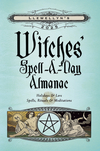POSTED UNDER Equinox, Luck, Ostara, AND MORE
Vernal Equinox Spell
Color of the day: Indigo Incense of the day: Pine Incense of the day: Pine The Vernal or Spring Equinox marks one of the two points during the year when the Sun's path crosses the celestial equator and the day and the night are of equal length. The ancient Celtic calendar only had three months, but in 1752 it was reconstructed with four months and eight holidays steaming from ancient festivals. In this more modern Celtic calendar, the Vernal Equinox marks the point of mid-spring. In our Gregorian calendar, meanwhile, this day is the first day of spring. And among the Teutonic peoples, this day was the time for a festival of spring called Ostara. Ostara is named after the goddess of spring whose name was Ostera among the Germans, and Eostre or Eastre among the Anglo-Saxons. This goddess's name is derived from the word for "dawn." It should be obvious at this point that Eastre also lent her name to the major Christian spring holiday that celebrates the rebirth of Christ-Easter. Although Easter eggs are usually said to derive from the egg's use as a symbol of rebirth in ancient Egypt and in the Near East, and from its adoption by Christians as a symbol of Christ's resurrection, clay eggs have been found in prehistoric tombs in Russia and Sweden. That is so say, the symbolism of the egg is universal. Of course, almost all holidays make use of magic; still, one does not often hear it described so plainly, particularly when dealing with Christian holidays. More often, magic acts and symbols are called traditions, or are thought of as things that bring luck. But in reality, the Easter egg is a magic talisman that assures rebirth, renewal, and good fortune. Start painting yours on Ostara, and use lots of red. |
Related Product
by Llewellyn
A Spell a Day Keeps the Monotony at Bay
Cast yourself an exciting year one spell at a time with this collection of new workings, recipes, rituals, and meditations. Crafted with simplicity in mind,...
Link to this spell: http://www.llewellyn.com/spell.php?spell_id=1408
